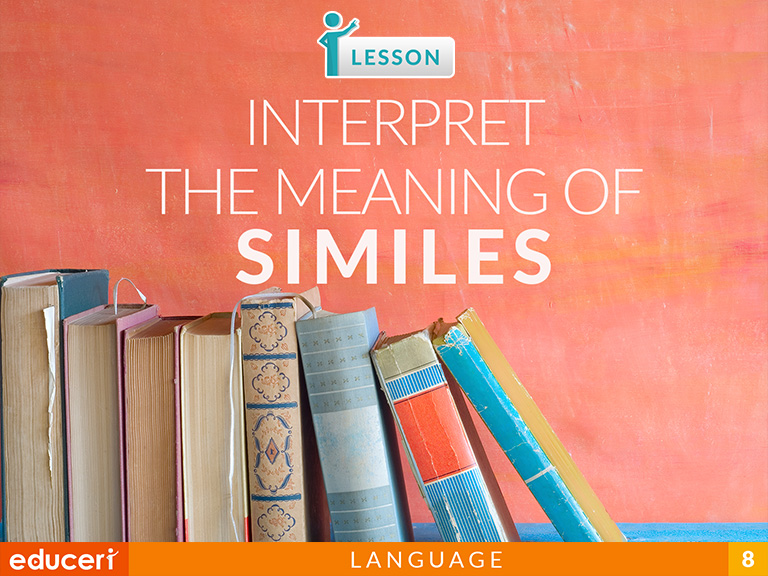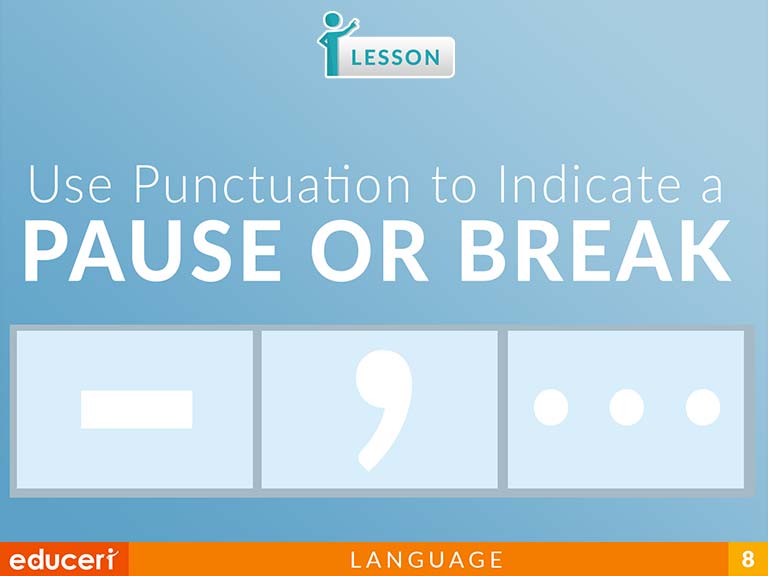All Lessons

Write Informative Text
This writing lesson covers how to write informative text. The lesson includes research-based strategies and strategic questions that prepare students for assessments. In this lesson, students write at least one complete sentence for each section of the planning chart completed in the Plan Informative Text lesson. Then, they use an editing checklist to identify and correct any errors. In addition to the lesson, there are four pages of topics for review and extended thinking.
Share This Lesson

Plan and Write a Narrative
In this writing lesson, students will plan and write a narrative composition.
Share This Lesson

Plan an Argument
This writing lesson covers how to plan an argument. The lesson includes research-based strategies and strategic questions that prepare students for assessments. In this lesson, students read the topic and decide their position about it. Then they identify three appeals for their position, focusing on logical, emotional, and ethical. They also restate their position for a summary. In addition to the lesson, there are four pages of new topics for review.
Share This Lesson

Write an Argument
This writing lesson covers how to write an opinion piece. The lesson includes research-based strategies and strategic questions that prepare students for assessments. In this lesson, students write an introduction that introduces the topic and states their position. Then, they write paragraphs that use logical, emotional, or ethical appeals to the audience. Finally, they write a summary paragraph that restates their position. These sentences are based on the planning charts created in the Plan an Opinion Piece lesson. In addition to the lesson, there are four pages of new topics for review.
Share This Lesson

Explain the Function of Verbals
This language lesson explains the function of verbals (gerunds, participles, infinitives) in general and their function in particular sentences. The lesson includes research-based strategies and strategic questions that prepare students for assessments. In this lesson, students will learn to identify the different types of verbals as well as their part of speech.
Share This Lesson

Determine the Meaning of Words Using Context Clues
L.8.4 Determine or clarify the meaning of unknown and multiple-meaning words or phrases based on grade 8 reading and content, choosing flexibly from a range of strategies.
L.8.4.AL.8.4.A Use context (e.g., the overall meaning of a sentence or paragraph; a word's position or function in a sentence) as a clue to the meaning of a word or phrase.
This language/vocabulary lesson covers the use of context (e.g., the overall meaning of a sentence or paragraph; a word's position or function in a sentence) as a clue to the meaning of a word or phrase. The lesson includes research-based strategies and strategic questions that prepare students for assessments. In this lesson, students will identify word meaning within expository passages.
Share This Lesson

Interpret the Meaning of Metaphors
This reading vocabulary lesson focuses on analyzing metaphors. The lesson includes research-based strategies and strategic questions that prepare students for assessments. In this lesson, students read each sentence and identify two things being compared. Then, they identify what qualities the two things being compared have in common. Finally, they interpret the metaphor in writing. In addition to the lesson, there are eight pages of Independent Practice and review modeled on current adaptive testing methods.
Share This Lesson

Identify Compound Sentences with Transitions
This writing conventions lesson focuses on identifying compound sentences with transitions. The lesson includes research-based strategies and strategic questions that prepare students for assessments. In this lesson, students read the sentence and identify independent clauses, if any. Then, they identify the transition word or phrase and determine if it is a compound sentence. Finally, if it is a compound sentence, they write how the clauses are related. In addition to the lesson, there are four pages of Independent Practice and review modeled on current adaptive testing methods.
Share This Lesson

Write Compound Sentences
This writing conventions lesson focuses on identifying compound sentences. The lesson includes research-based strategies and strategic questions that prepare students for assessments. In this lesson, students read the sentences and identify independent clauses, if any. Then, they label the subject, verb, and coordinating conjunction, if any. If it is a compound sentence, they write the relationship between the two clauses. In addition to the lesson, there are four pages of Independent Practice and review modeled on current adaptive testing methods.
Share This Lesson

Analyze Idioms
This reading vocabulary lesson focuses on analyzing idioms. The lesson includes research-based strategies and strategic questions that prepare students for assessments. In this lesson, students read each sentence and identify the idiom or words that are different from their literal meaning. Then, they analyze the idiom by writing its literal and its figurative meaning. In addition to the lesson, there are two pages of Independent Practice and review modeled on current adaptive testing methods.
Share This Lesson

Establish Coherence Through Parallel Structure
This writing conventions lesson focuses on establishing coherence through the parallel structure. The lesson includes research-based strategies and strategic questions that prepare students for assessments. In this lesson, students read the sentence and identify parts of it that are not parallel, based on three given rules of parallel structure. Then, they rewrite the sentence using parallel structure and read it aloud. In addition to the lesson, there are eight pages of Independent Practice and review. These are modeled on current adaptive testing methods.
Share This Lesson

Interpret the Meaning of Similes
This reading vocabulary lesson focuses on analyzing similes. The lesson includes research-based strategies and strategic questions that prepare students for assessments. In this lesson, students read each sentence and identify two unlike things being compared. Then, they identify what qualities the two things being compared have in common. Finally, they interpret the simile in writing. In addition to the lesson, there are eight pages of Independent Practice and review modeled on current adaptive testing methods.
Share This Lesson

Use Apposition to Indicate the Relationship Between Ideas
This writing conventions lesson focuses on using apposition to indicate the relationship between ideas. The lesson includes research-based strategies and strategic questions that prepare students for assessments. In this lesson, students read the noun phrase and the sentence to determine the noun to be identified by the noun phrase. Then, they write a sentence using the noun phrase as an appositive. Finally, they read the sentence, listening for the appositive. In addition to the lesson, there are eight more pages for Independent Practice and review modeled after current adaptive testing items.
Share This Lesson

Use Coordination to Indicate Relationships Between Ideas
This writing conventions lesson focuses on using coordination to indicate relationships between ideas. The lesson includes research-based strategies and strategic questions that prepare students for assessments. In this lesson, students read the sentences and identify the correct relationships between a pair of sentences. Then, they determine the correct coordinating conjunction to use and combine the sentences properly, using coordination to indicate the relationship between ideas. In addition to the lesson, there are six pages of Independent Practice and review modeled on current adaptive testing methods.





